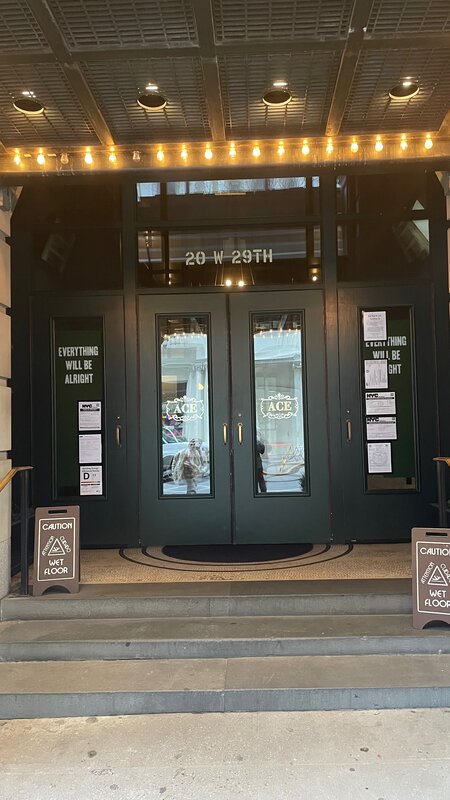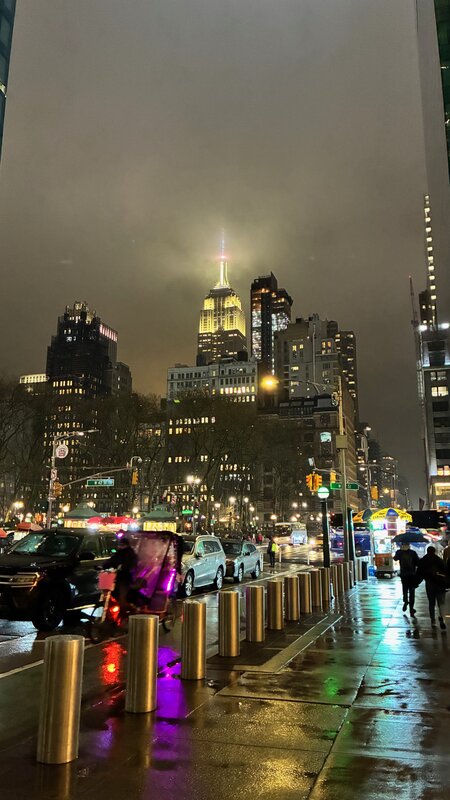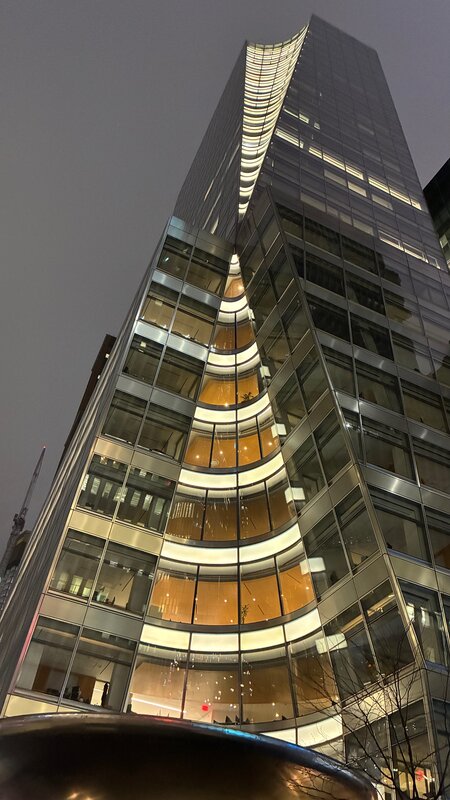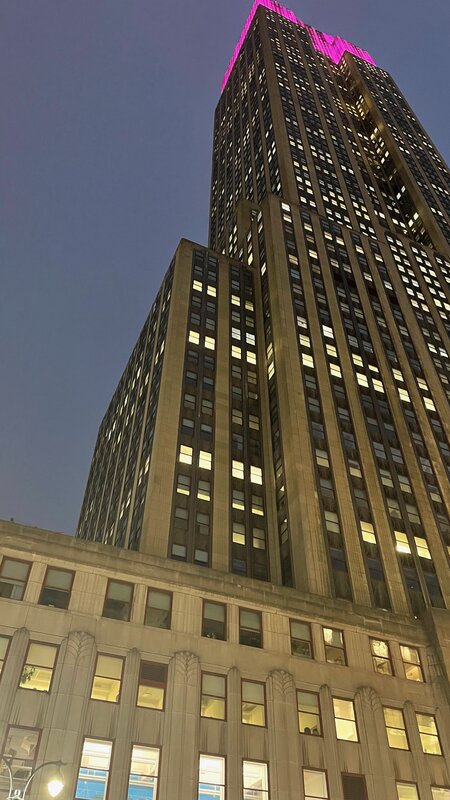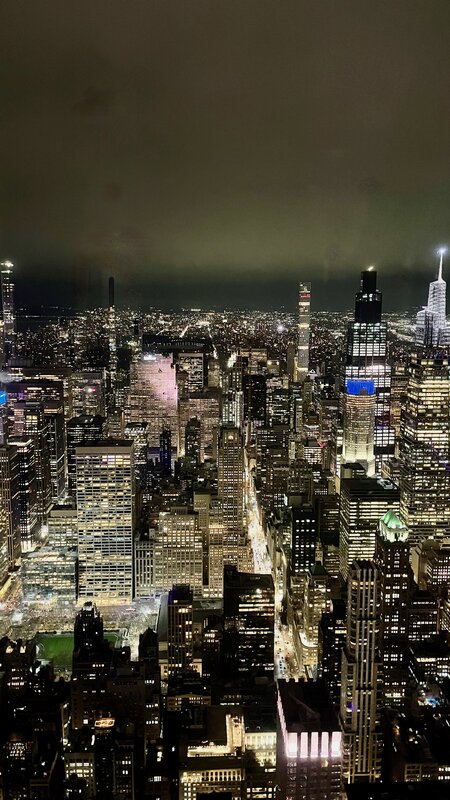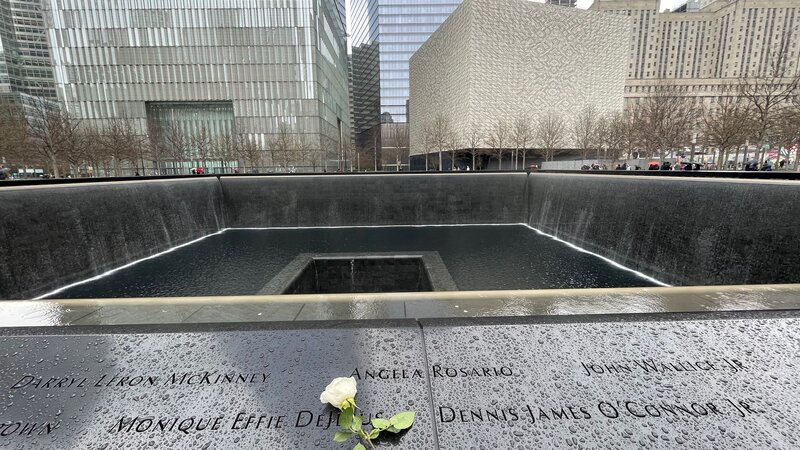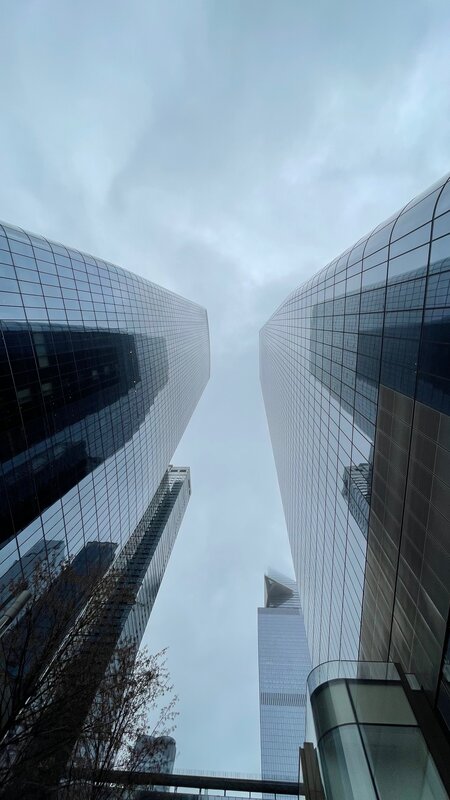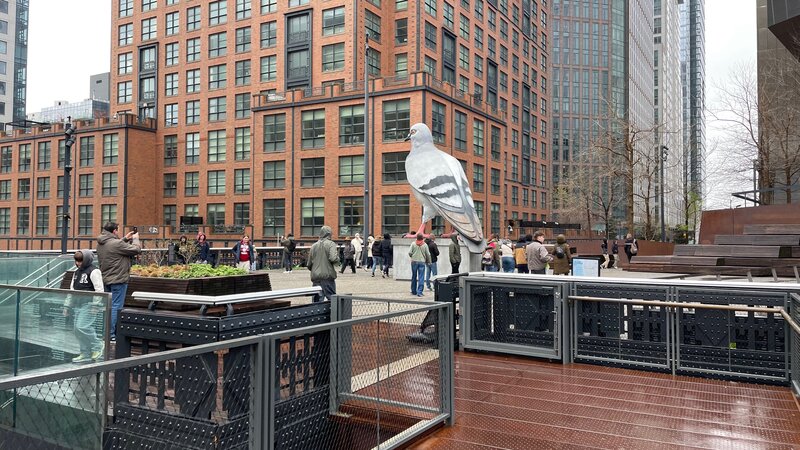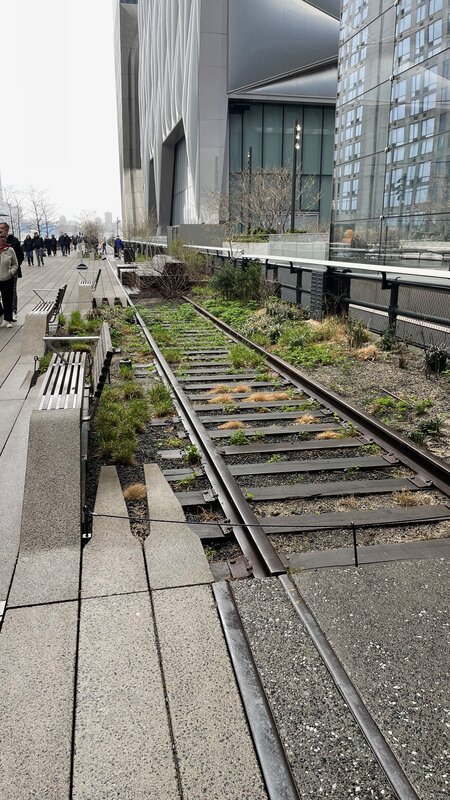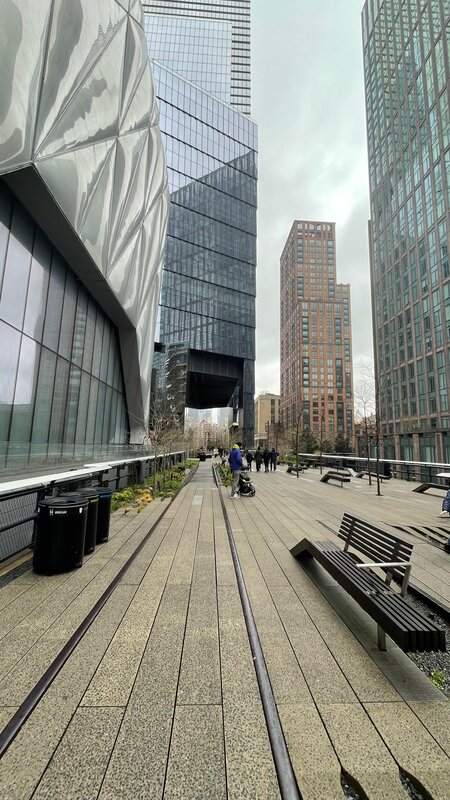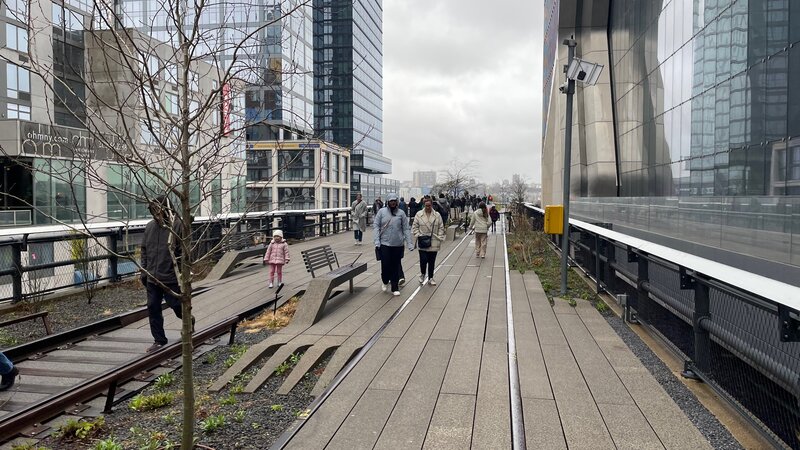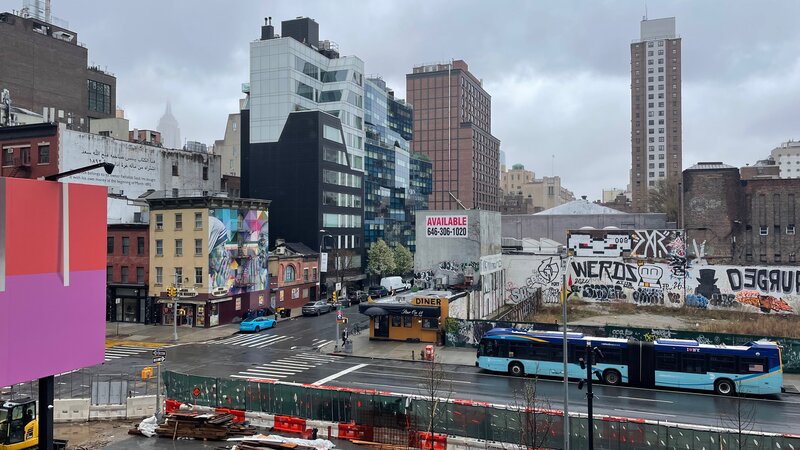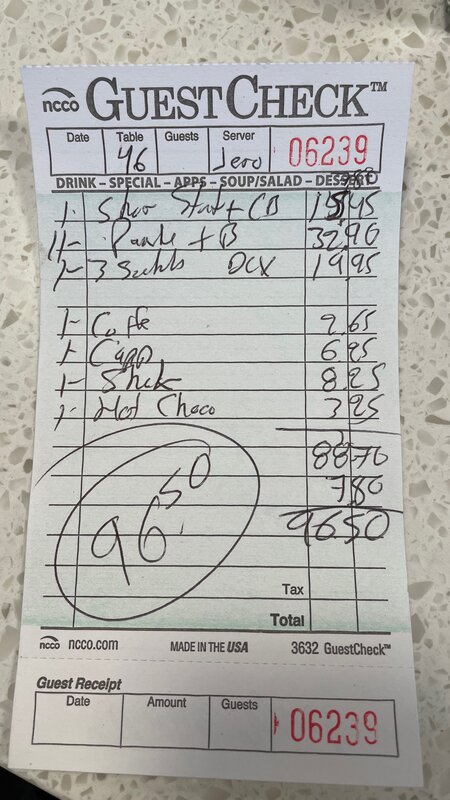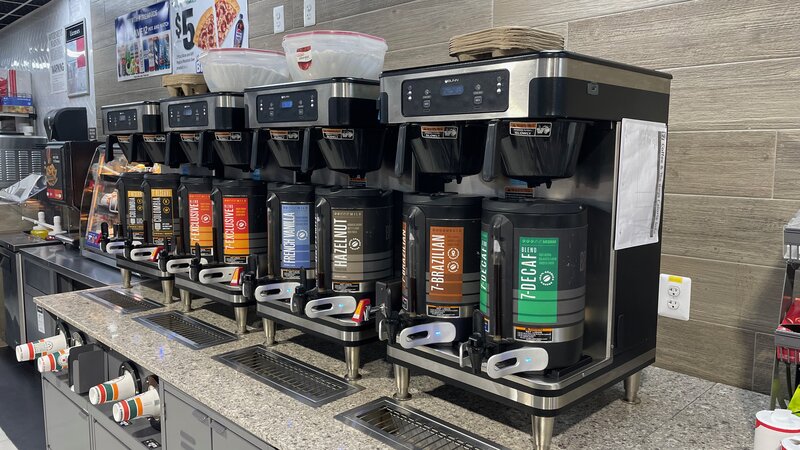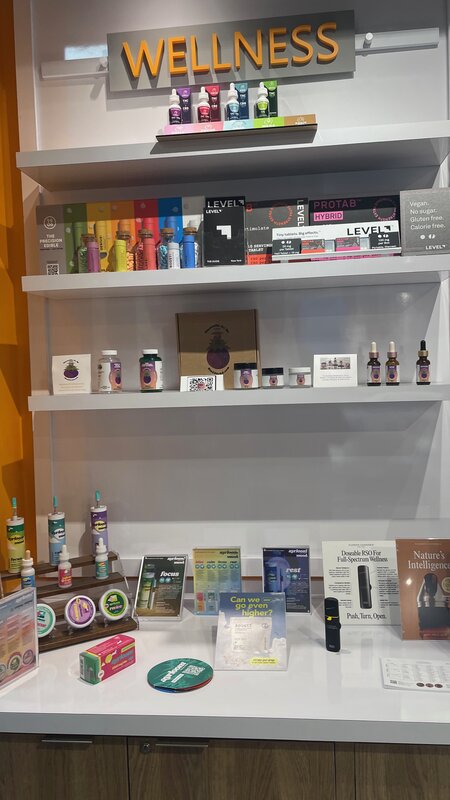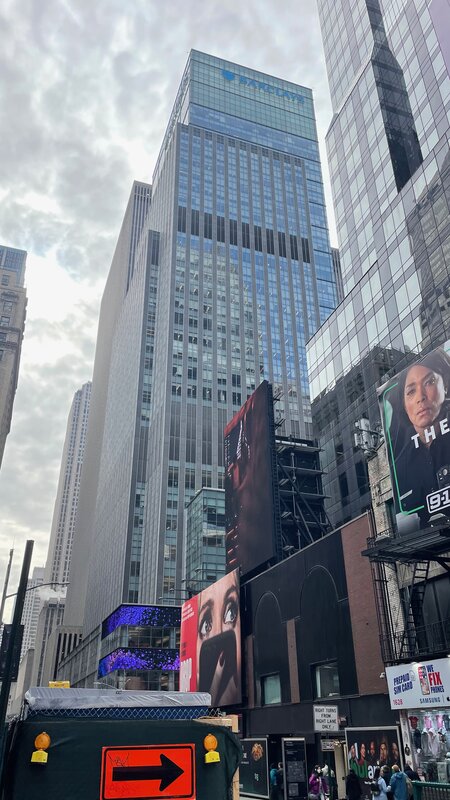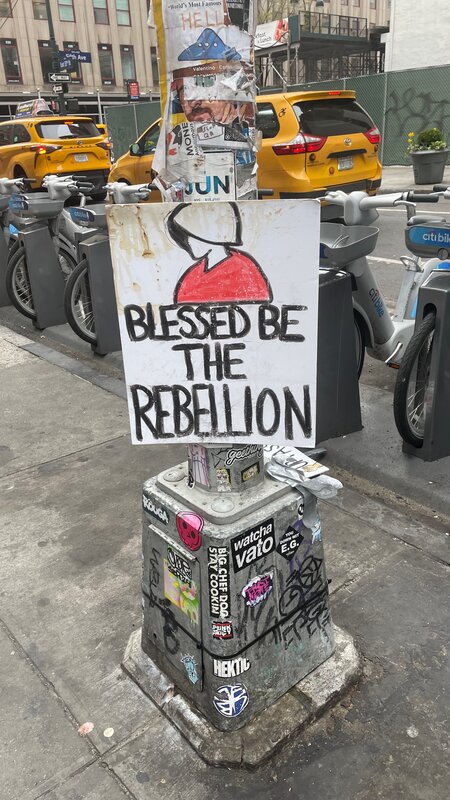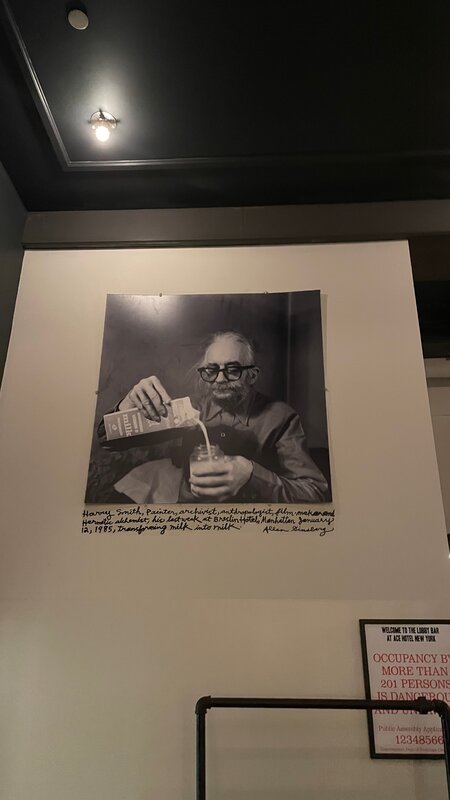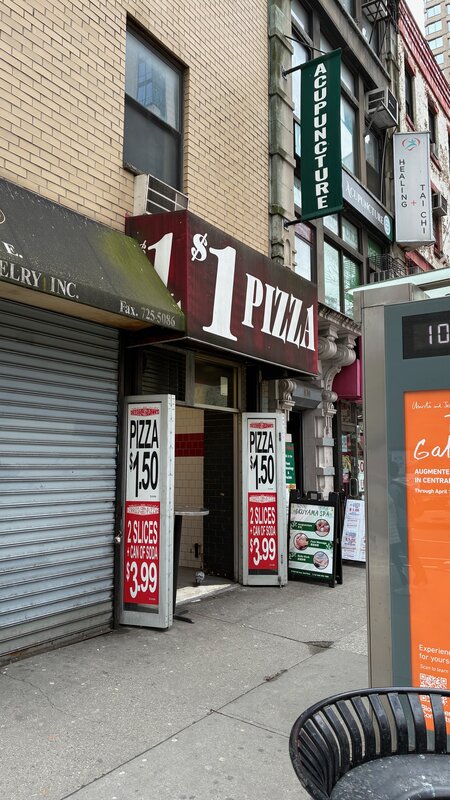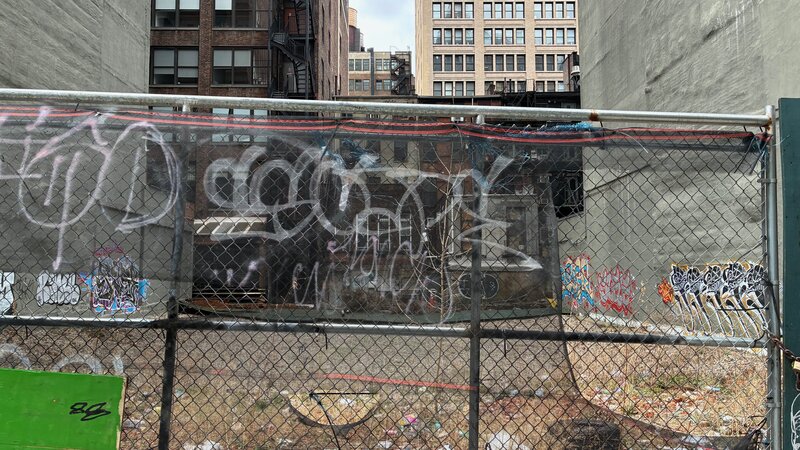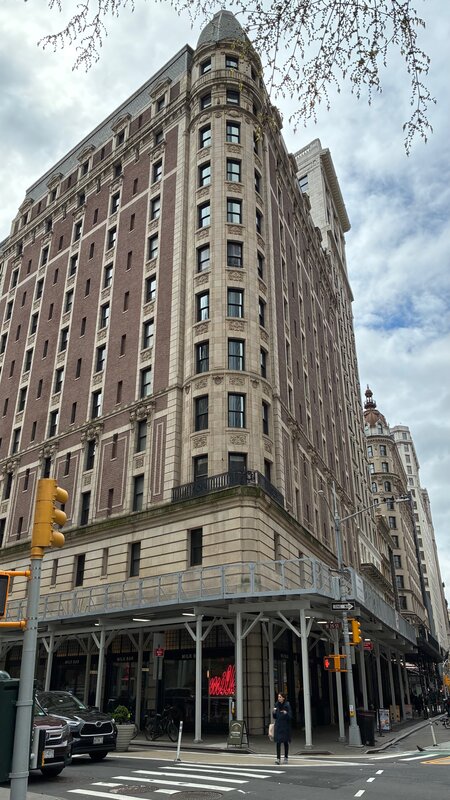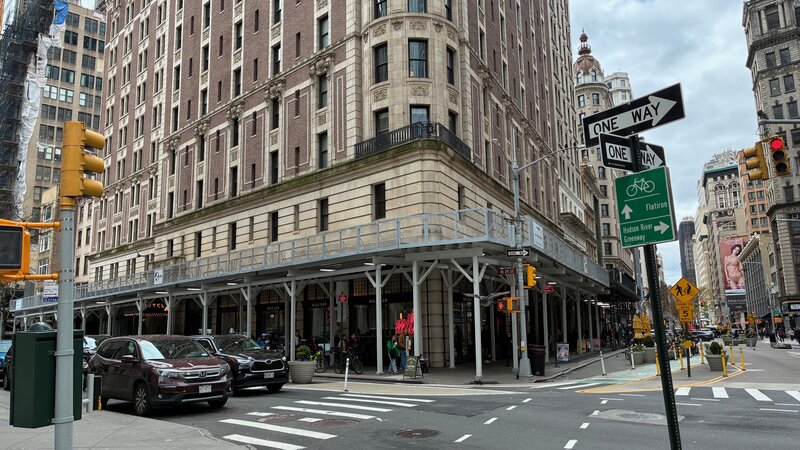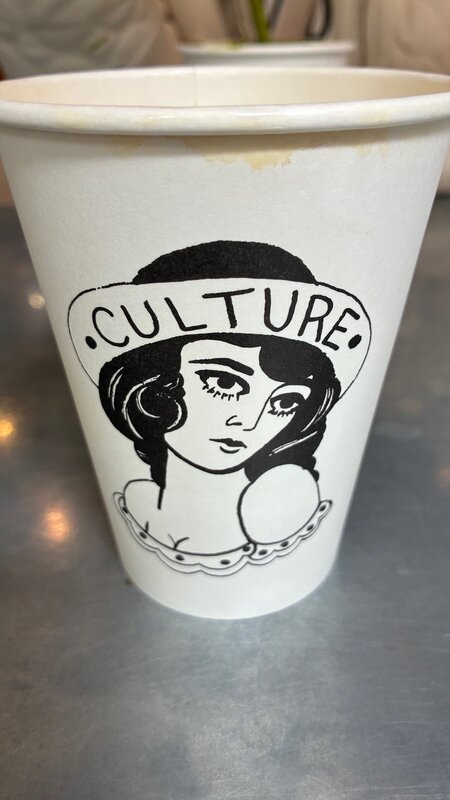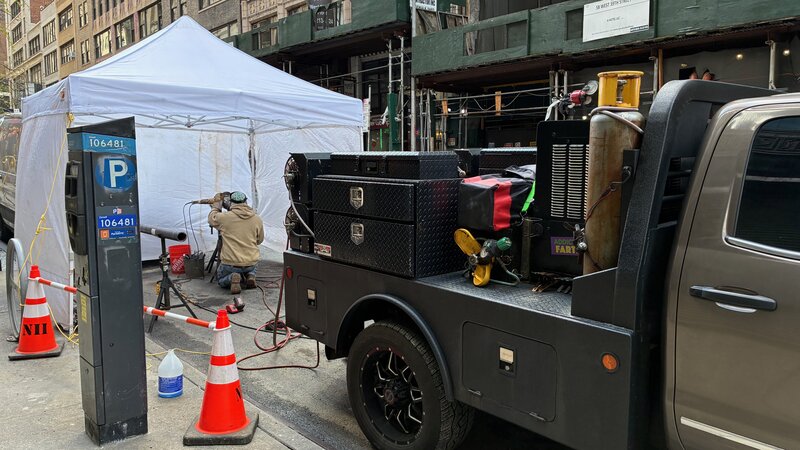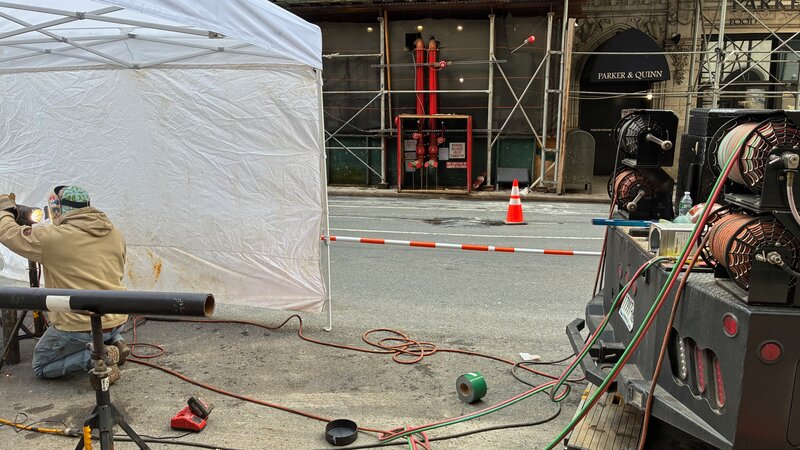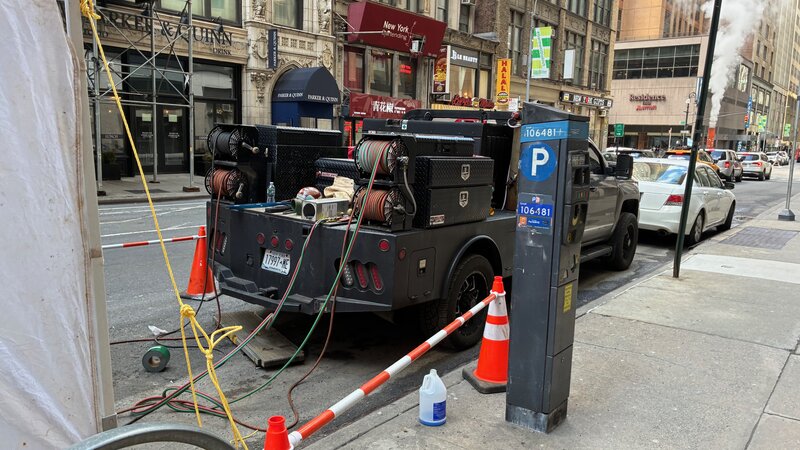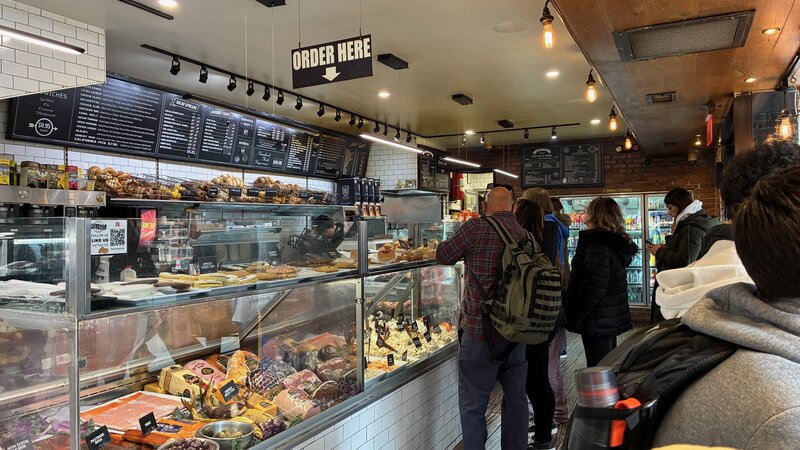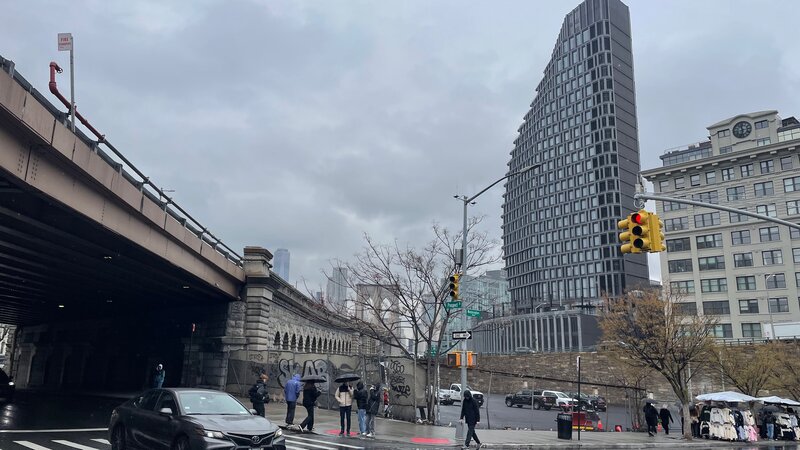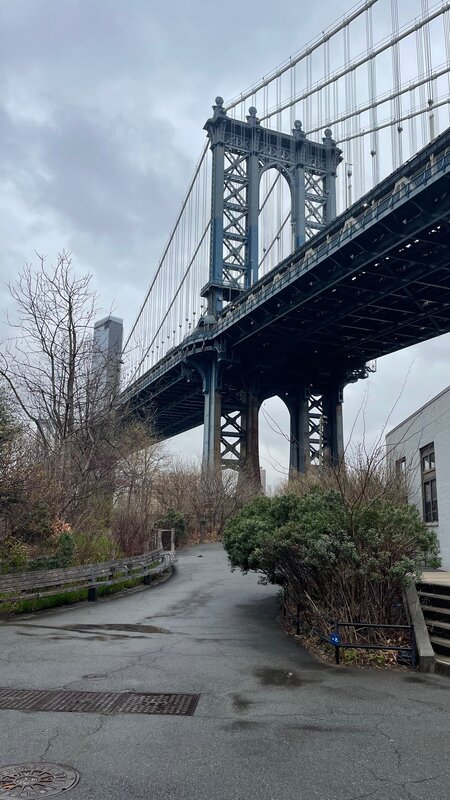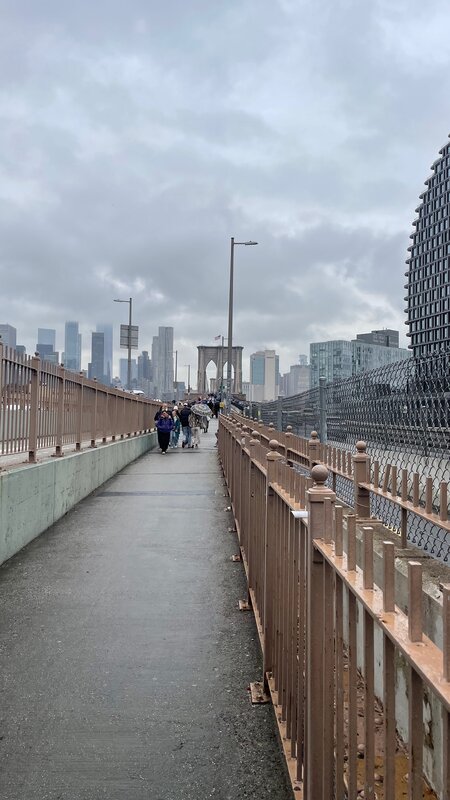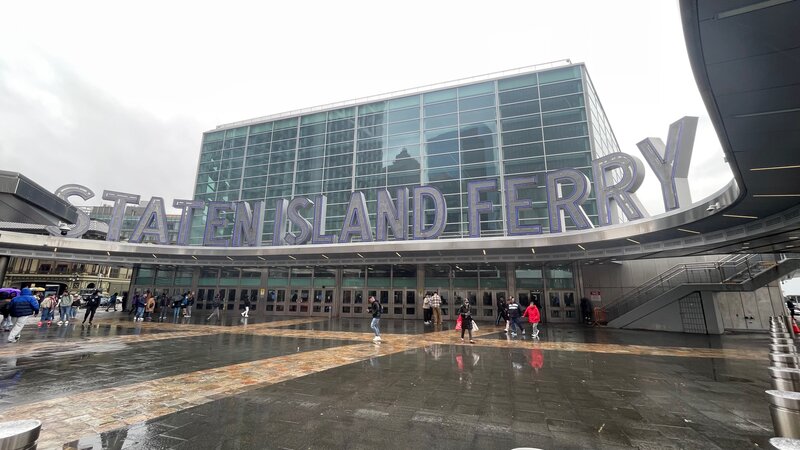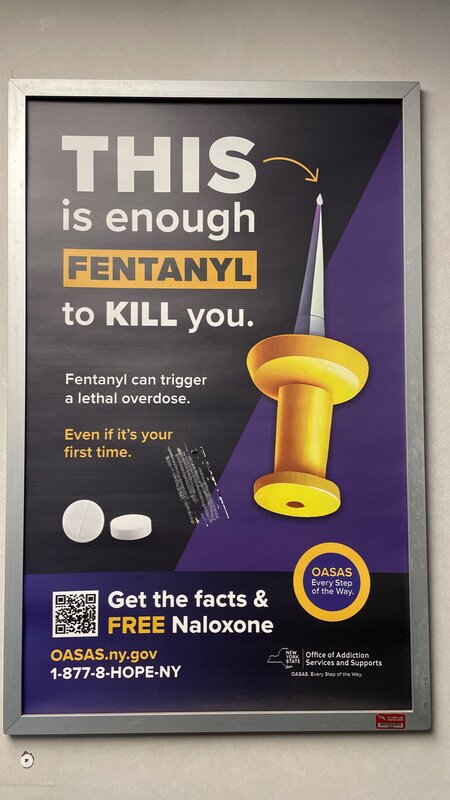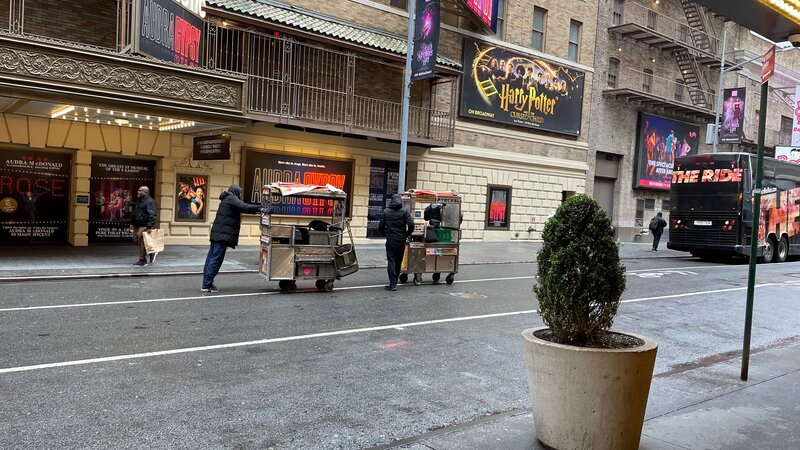NYC Reflections
Preface
I wrote this reflection against the backdrop of the new Trump presidency. Tariffs had been announced. The flight to safe havens had kicked off. The dollar was looking weak, DXY was down, and it was clear that things were pretty fucked economically.
It felt like the end of thirty years of globalisation — the only capital system my adult life had ever known — had now changed, irrevocably. A kind of USExit, if you will.
This isn’t about politics. I’m not here to espouse a view. It’s more an expression of admiration — for America, with all its ills, being, or once having been, the leader of the free world. A place that could and still can be fixed, but for now decided to take a side quest down self harm avenue.
And so, I wrote this with a sense of melancholy at best — or perhaps more truthfully, sadness and mourning. Another wound in America, one which will heal, no doubt. But perhaps not in my lifetime.
📖 Introduction: Three Eras, One City
New York City doesn’t just change — it evolves, reinvents, and reshapes itself with a speed and intensity few other places can match. I’ve visited three times across what is, technically, three different decades: first in 1999, again in 2002, and most recently in 2025.
Each visit captured a different version of the city — one pre-millennium and full of late-90s optimism, one still reeling from the aftermath of 9/11, and one deep in the complexities of the modern world. This post isn’t a travel guide. It’s a reflection. A look at how the city — and perhaps the world — has shifted across those years, through the lens of a visitor who came back, but only after a 22 year gap, trying to make sense of it all.
I first visited New York in 1999. At this point - a digression and confession - I’d plagiarised the list of bars and their descriptions and passed them off as my own on that page - but the rest of it was mine.
9/11 hadn’t happened yet.
I was 24 — young, single, fed up and having a conversation with two friends on a Friday in a pub in possibly Didcot, about how life was dull (yeah, Didcot), even though looking back now my (work)life was pretty crazy.
“Why don’t you go to New York?” one of them said, I forget who. I flew out on the Wednesday morning, after booking it on some new upstart website called lastminute.com…
I walked until I was exhausted, then drank or slept until the next day, when I’d do it all again. I remember waiting at a crossing one night around 9pm, and just falling over. My legs had given up. That kind of trip.
At night, I found myself in places like the Molly Wee bar and Rudy’s. I stayed at the Star Hotel — “cheap and cheerful,” I wrote at the time. “You could probably spit on Madison Square Garden from an upstairs room.” It had a charm, and a shared bathroom - there was no room in my room to have a cat…
I returned in 2002, this time with my now-wife. We stayed in the Portland Hotel, just off Times Square. I somehow ended up in a tequila-drinking competition at Rudy’s with two off-duty NYPD officers. I lost, obviously. Still married though.
Fast forward to 2025. I’m back, this time with a family. Same city, different man.
I’ve watched it shift through eras: the pre-millennium buzz, the raw post-9/11 aftermath, and now, a post-pandemic world balancing tech, tension, and transformation.
This isn’t a travel guide. It’s a reflection — of the city, and of me. Here’s what I saw, what I felt, and what stayed with me.
🛂 Immigration: Gateways and Gatekeepers
1999 – Naivety Meets Authority
Arriving at JFK as a wide-eyed 24-year-old, the first taste of America came not through food or skyscrapers, but via a state trooper at the immigration desk. I still remember his disapproving look at my facial piercings. He told me to take them out before he’d consider letting me in. Whether it was a power play or protocol, I’ll never know — but in the end, he let me through. No apology, no smiles, just a tacit agreement: play by the rules, you get in. Looking back, I was naïve, probably overly casual about how these things worked. But there was still a sense that, ultimately, people got in.
2002 – A Blank Space
My post-9/11 visit should’ve come with clear memories of heightened security and a more anxious America. But strangely, I can’t remember anything about the immigration process. Maybe it was unremarkable, or maybe the city’s emotional weight overshadowed everything else. Either way, the silence in my memory speaks to how numbing that era could be.
2025 – Politeness Replaced by Pressure
This time around, the tone was starkly different. From the moment we landed, it felt like we were being viewed as a problem — like we had something to prove or apologize for. The immigration officers weren’t just cold; they seemed almost hostile, suspicious by default. It wasn’t about security anymore, it was something deeper — a kind of performative gatekeeping that made it clear: you’re not welcome until we say so. Even as someone just visiting, it felt oddly personal.
🛏 Ace Hotel: A Shower, a Story, and a Surprising Surname
The Ace Hotel (20 W 29th St) now occupies what was once the Hotel Breslin, built in 1904. Part of the original “Great White Way,” it was designed by architect Clinton & Russell, and is still a registered landmark. It’s a beautiful blend of preserved old-world detail and hipster reimagining. Here’s a great short write-up on the building’s origins, and another with some more up to date details.
We walked in with a bit of hesitancy — the foyer was dark and moody, but that’s because it is everything. The bar, the lobby, the lounge — all rolled into one space. Once you know that, the atmosphere clicks. It’s a vibe.
Check-in was quick, helped by the fact the receptionist had the same surname as me. Small wins.
The room was big, clean, and felt like it belonged to a different era — in a good way. It didn’t feel like we were staying in some clinical, copy-paste hotel. It had character. History. The beds weren’t huge, but we all fit, and no one complained.
And the shower. Let’s talk about the shower. I’ve got a bit of a thing for good showers, and this one was genuinely one of the best I’ve ever used. Pressure, heat, space — all spot on.
I loved the place. If (when) I come back to NYC, this is where I’ll stay again. No question.
🌇 Skyline & Streets
The first time I went, I have memories of popping into a diner or a coffee shop, and of there being millions of little shops — selling pizza, jewellery, bodegas, and everything in between.
This time, not so much.
I caught up with a friend who’s lived in NYC since 2016, who confirmed it — most of those places have closed down. The destruction that COVID brought played the death knell for a lot of them. As usually happens, distressed assets were bought up by those with the capability and capital to construct more capitalistic churches to consumerism.
Now, soulless shops and businesses tend to mark the streets.
But the saving grace? The streets themselves. Just as busy and frantic as they always were — horns, shouting, people weaving through traffic like it’s a sport. That energy hasn’t gone anywhere.
And the food carts. Not as good as I remember, if I’m honest — but the bagels? Even the ones from the most average cart still beat anything you’ll find in a UK supermarket. No question.
Attractions
🏙 Empire State of Mind
1999 – First Skyscraper, First Love
It was a clear, sunny day when I first ascended the Empire State Building. I’d never seen a skyscraper before — not properly — and the sheer scale of it was staggering. From the observation deck, Manhattan sprawled beneath me like a grid of possibility. The Twin Towers stood tall and calm in the distance, anchoring the skyline. You could still go up them then, I believe, but that day it was all about the Empire State.
I remember being genuinely awestruck — not just by the view, but by the city itself. How could people live here? How could this be someone’s everyday? It felt like a place of infinite stories, infinite lives.
And if you’re reading this while you’re still young — why don’t you? If there’s ever a city worth throwing yourself into, it’s New York.
2002 – Absence as Presence
Returning just after 9/11 was… strange. The view was physically the same in many ways — the Empire State still stood proud, the streets below still pulsed with yellow cabs and relentless energy. But there was an undeniable void where the Twin Towers should have been. It wasn’t just visual; it was emotional. Looking south, the skyline felt wounded, like it was holding its breath. That absence spoke louder than most things I’ve ever seen.
2025 – The Shape Shifts
More than twenty years on, and the skyline has evolved almost beyond recognition. New towers have risen, glassier, taller, more tech-savvy — each trying to stake its place in the city’s visual legacy. But through the shifting silhouettes, the Empire State, the Chrysler Building, and the MetLife still hold court. Their presence is comforting. In a city addicted to reinvention, they remind you that not everything changes — or at least not all at once.
🕳 Ground Zero: Memory in Layers
1999 – Just Another Stop
In 1999, the Twin Towers were simply there. I remember walking past them, looking up briefly — amazed by their scale — and then moving on with my day. They were impressive, no doubt, but they were part of the city’s noise, just another pillar in a skyline filled with giants. I didn’t go in, didn’t linger. Back then, they felt permanent — an unshakable part of the Manhattan landscape.
2002 – The Abyss
Three years later, I found myself at the same location, but nothing about it felt the same. We stood at the edge of Ground Zero, staring into a raw cavity — a pit of twisted metal, muddy water, and silent grief. Around the perimeter, chain-link fences had become impromptu shrines.
Photos. Notes. Letters. “Missing” posters, weather-worn but clinging on — the kind of imagery you expect from a film, except this was all heartbreakingly real.
At the time, I don’t think I had the emotional range to fully connect with what I was seeing. I was younger, more selfish, and perhaps still processing my own version of the world. But even then, the scale of loss was undeniable. The hole in the ground mirrored the one in the city’s soul.
2025 – Stillness in Stone
Returning two decades later, the site is transformed — but it hasn’t forgotten. The two vast reflecting pools sit in the very footprints of the towers, each one bordered by the names of those lost, cut deep into bronze. It is, without doubt, the most moving memorial I’ve ever experienced.
There’s something profound in the way the water disappears into those central voids, endlessly cycling — as if the city is still trying to process what happened, still pouring its grief somewhere.
It is a place built from sorrow, but not stuck in it. And in a world that feels increasingly angry and divided, this space stands as a reminder of what happens when hate wins — and what we must build to fight that.
🌿 The High Line: A Walk Through Time
2025 – Elevated Perspectives
Walking the length of the High Line was a highlight of my 2025 visit. Despite the cold and wet weather, the experience was immersive and invigorating. The elevated park offered a unique vantage point over Manhattan’s streets, blending urban life with pockets of greenery. I found myself captivated by the juxtaposition of the city’s hustle below and the tranquil path above.
As I strolled, I couldn’t help but reflect on the High Line’s origins. Built in 1934 as part of the West Side Improvement Project, it was originally an elevated freight rail line designed to remove dangerous train traffic from Manhattan’s streets. The line was decommissioned in 1980 and lay unused for years before being transformed into the park we see today.
Source: Britannica
Looking Ahead
While the High Line remains a cherished public space, I noticed signs indicating potential developments. Recent plans aim to expand the park and integrate it further into the city’s fabric. For instance, the Gansevoort Square area is set to be reimagined, potentially extending the High Line and adding new amenities.
Source: Secret NYC
Such developments promise to enhance the park’s reach but also raise questions about preserving its unique character.
Despite the drizzle during my visit, I could envision the High Line in summer — vibrant with blooming plants, art installations, and bustling with visitors. It’s a testament to New York City’s ability to repurpose its industrial past into spaces of community and reflection.
🌁 Brooklyn & DUMBO: Echoes from the Edge
2025 – A Walk Beneath the Tracks
We crossed into Brooklyn for my eldest — a huge Brooklyn Nine-Nine fan — but also because I’d never been. DUMBO had been on my list for years. Even on a grey, windswept day, it delivered. We strolled its cobbled streets, paused by old brick facades, and looked back across the East River. Manhattan stood there, bold as ever — that view, that skyline, still utterly hypnotic.
Then, under the Manhattan Bridge, a train clattered overhead — that raw, metallic soundtrack of the city. In that moment, I was transported. Not just to the New York of film and memory, but to the peak of America’s industrial might. The sound of engineering. Of movement. Of purpose.
But that world is gone.
That America — confident, productive, united by shared ambition — is a memory. It was real, yes. It built wonders. But it’s over. And what’s worse, some would drag us backwards toward it. Trumpism isn’t about revival — it’s about regression. It clings to a mythologised past, refusing to accept that the future can’t and won’t look like the past.
The truth is this: nostalgia doesn’t build bridges. Progress does.
And while the old tracks still carry trains, it will be progressives who lay the new ones — toward a future that’s fairer, smarter, more human. Standing there beneath that bridge, I wasn’t just hearing the past rumble by. I was feeling the urgency of the future waiting to be built.
🌉 Crossing the Brooklyn Bridge
2025 – First Crossing
Crossing the Brooklyn Bridge for the first time was something I won’t forget. It’s a view you could never get used to — looking left and right, trying to pick out familiar buildings as you slowly make your way back into Manhattan. Even on a cold, wet, windy day, it was mesmerising.
At one point, we passed some idiot who was removing one of the (no doubt millions of) screws holding the wooden planks in place on the walkway. That in itself was a surprise — in the UK, beyond Victorian piers, you don’t really see wood used in public paths like that. But the wooden boards gave a really tactile feel underfoot. Maybe we should use more natural materials in public infrastructure — it just felt good to walk on.
And then, as you walk down the slope back into Manhattan, it’s like re-entering chaos after a short detour to calm. The bridge is peaceful, steady, even reflective. Manhattan is… well, Manhattan.
🚉 Grand Central: Ghosts of the Golden Age
We visited Grand Central Terminal — the “main station” in every sense of the word. I’d always wanted to see it properly, and it didn’t disappoint, not visually at least. That massive, arched ceiling painted with stars, the grand clock in the middle of the concourse — it’s exactly as iconic as you imagine.
In my head, it was The Untouchables — the echoing steps, people rushing, something cinematic in the air. But in reality? It felt more like a ghost of what it used to be.
The kiosks were mostly shut. All those little stands that would’ve once sold coffee, pastries, papers — gone. Machines now rule the day. Screens instead of people. You tap, you wait, you leave. Efficient, sure, but cold. No friendly face, no banter, no character.
You can still feel the scale of the place, the history baked into the stone — but it’s like watching a film set after the crew’s packed up. The space is still magnificent. But the soul? That’s harder to find.
🌆 Times Square: Lights, Hustle, and a Hint of Hollow
We visited Times Square again this trip, and if I’m honest — I don’t really remember much about it from my earlier visits, apart from eating in the McDonald’s in 1999 and looking out over it all. I was probably just caught up in the buzz of it all back then.
This time, it was busy — ridiculously busy — but also, somehow, felt empty. Just crowds of tourists, all pointing cameras at the same signs. It felt safe enough, no issues there, but also a bit soulless. There’s energy, yes, but not a lot of heart.
I did get approached by a guy trying to sell his “CD” — which turned out to be a digital download card. He seemed genuine though. Just a guy doing his daily hustle, trying to get people to listen to his music. I bought it. Why not give him a win? He told me I had a good-looking son and that we seemed happy together — and you know what, always a win when you get rapport like that. Made me smile.
Beyond that, the main impression was just… shopping. It’s a massive retail zone now. But I’ll say this — the Swatch store was actually pretty cool. I don’t care much for most brands, but that one still does something a bit different.
🌳 Central Park: Shadows, Dogs, and a Lot of Luck
This was my first proper visit to Central Park — and the first thing that hit me wasn’t the trees or the paths or the skyline… it was what’s above the skyline. The new “millionaires’ row” of ultra-thin, ultra-tall towers now looming over the park. No doubt they cast enormous shadows across the grass in the summer. Strange, really — a few individuals with enough wealth to buy skyspace… and in doing so, alter the light cycle of one of the world’s most famous gardens. Even if it’s only an acre or two, it’s a hell of a second-order effect.
Anyway, I digress.
It’s a great place for a walk. Genuinely peaceful in places, and it felt entirely safe. My friend advised us to head up the east side, which we did — then grab the subway back from further north. It was a good call.
New Yorkers are tremendously lucky to have this park. It’s a proper green space — not just a patch of grass with a bench and a bin. But I couldn’t help feeling a little sorry for the dogs I saw. Lots of leashes, not a lot of free running. All that space, and still not really free. *Update: I’ve been informed they do run free before 9am and after 9pm!
⛴ Staten Island Ferry: A Free Ride with a Familiar View
By now — and as XKCD reminds us — everyone knows the Staten Island Ferry is the go-to way to get a free and reasonably close look at the Statue of Liberty. It’s practically a tourist hack at this point.
Of course, that didn’t stop the gauntlet of street hustlers outside the terminal, all trying to push us towards one of the paid guided tours. After a few rounds of polite British declinations, I realised the only strategy that worked was to stop engaging and just keep walking. There’s a good few hundred metres of them, all trying their luck.
But it made me think — it must still be lucrative. Even with all the competition, even with visitor numbers down. Our own trip came with travel warnings. My government had one in place, and there’d been a Canadian-led boycott in response to recent political tensions. Times are strange. Ce change.
As for the ferry itself? Uneventful — but it was dry, it was warm, and honestly, that’s a tremendous win when you’re walking miles every day. You get a decent view of the Statue. If not, ask for your money back (joke… it’s free).
We didn’t stick around on the other side — just hopped straight back on the return ferry. In hindsight, we probably should have explored Staten Island a bit. Small regret, but there it is.
🍳 Murray Hill Diner: One Real Meal and a Glimpse of the Old City
We went out for breakfast one morning — the only proper sit-down meal we had during our whole stay — at a diner in Murray Hill. It was great. Classic stuff: sausages, bacon, maple syrup, and bottomless coffee (American drip, obviously). I fully embraced it. We all live in a world now where you can get a flat white, but this felt more… honest.
It was oddly all-male staff, which stood out, but they were attentive and quick. Proper old-school service. The total came to about $100 for the four of us to leave full and happy. Worth every cent.
Back in 1999, I remember wandering around 30th Street and randomly walking into a diner — no idea which one, sadly, and it’s probably long gone now anyway. My friend who lives in the city told me there are only a handful of proper diners left in NYC now. Most have disappeared. Another slow fade-out of the city’s character.
Walking through Murray Hill afterwards really stuck with me. It’s different to the Broadway or Midtown chaos — the streets felt more lived-in, less commercial. No sea of tourists, just people going about their lives. It’s exactly the kind of New York I’d hoped to see. Real people. Real neighbourhood. Fewer neon signs, more groceries and laundromats.
And as we left the diner, full and content, I did feel a bit sad — wondering how long that place would last. How long before it, too, is replaced by a brunch spot with reclaimed wood and single-origin espresso. I hope it holds on. It might be the only diner my kids ever get the chance to visit in NYC.
🥤 7-Eleven: Drip Coffee & Americana
This one’s a bit unexpected — but we ended up at a 7-Eleven. My daughter had seen one from the car window on the way in from the airport and got excited about it. So naturally, we had to go.
I was vaguely aware of them — just a convenience store, right? I’ve seen movies. But stepping inside, I was actually taken aback. It was entirely food-focused. Everything seemed designed for quick fuel: pizza slices, hot dogs, doughnuts, microwavables — and then the drinks wall. That coffee and drinks section was something else.
I grabbed a large drip coffee — because of course I did — and just stood there soaking in the smell of it all. It was oddly comforting. The sweet, syrupy smell of the slurpee machine, the burnt-toast aroma of the drip coffee, the faint background whirr of refrigeration. I hadn’t expected a corner shop to hit me with such a strong dose of Americana, but there it was.
It’s a reminder, I guess — sometimes the most ordinary stops give you the most unexpected moments.
🍕 Pizza Slices: Still Ubiquitous, Slightly More $$$
While we’re on the subject of food — a word on New York pizza slices. They’re still everywhere. Still hot, still fast, still reliably satisfying. But that legendary “$1 slice” is mostly a thing of the past.
Plenty of shops still have the old signage — proudly painted “$1/Slice” in bold lettering. But the fine print is reality: it’s more like $1.50 and up these days. We kept finding ourselves at Little Italy Pizza on 2 E 33rd St — a small chain spot where slices were going for as much as $5.
But… great pizza. Proper fold-it-in-half New York street pizza. We went back a few times, which says it all.
⚠️ Working Around the Edges: A Country Obsessed with the Output, Not the People
One thing that kept jumping out at me during our trip — especially while just wandering — was how people were working. Digging up roads, laying pipe, manoeuvring heavy machinery. What stood out wasn’t the scale of the work — it was the lack of protection.
No ear defenders and other PPE in situations where you’d expect them. Pedestrians weaving around exposed worksites. In the UK or Europe, you’d have entire areas cordoned off, redirecting foot traffic, with warning signs and temporary barriers everywhere. In New York? The work just happens, and the public walks around it.
At first, I thought it was an exception. But I kept seeing it — over and over. And it started to stick.
In a country so famously obsessed with lawsuits, it seemed like madness. But then it clicked — the healthcare system here is so broken and expensive, maybe the real deterrent is just… not getting hurt. And if you do? Good luck.
It gave me a strange clarity. A laser focus, almost. America doesn’t seem to care that much about its workers — it cares about the work being done. The job. The deadline. The deliverable.
I had this sense that it wasn’t always like this. That there was a time when American labour meant something more. When protecting workers was part of the pride. But like so many other things, those protections cost money. And those costs, it seems, have been cut.
In a political moment where “Make America Great Again” is echoing once more, this felt like the sharpest contradiction. You can’t build greatness on a workforce you’re willing to grind down. That’s not greatness — that’s just denial, dressed up in nostalgia.
🌟 Final Reflections
New York in 2025 still has so much of what makes it brilliant. The energy. The skyline. The feeling that anything could happen. But it also feels like a city under pressure — squeezed by commercialisation, thinned out by loss, and struggling at times to keep hold of its character.
If you’re visiting for the first time, you’ll probably still fall in love. If you’re coming back after a long time, you’ll notice what’s changed.
But either way, New York still matters.
It’s still New York.
And I’ll be back.
There’s something strange and beautiful about watching a city — and yourself — change together over time. With every visit, I’ve been someone new, and so has the city. Some parts are unrecognisable. Some parts haven’t changed at all.
Maybe that’s the trick with New York. It never stays the same, and yet somehow, it never stops being New York. For all its noise, its grind, its contradictions — it remains a place that asks big questions, gives small moments, and refuses to let go of your imagination.
And if you’re lucky, it gives you a hot slice and a good shower along the way.
